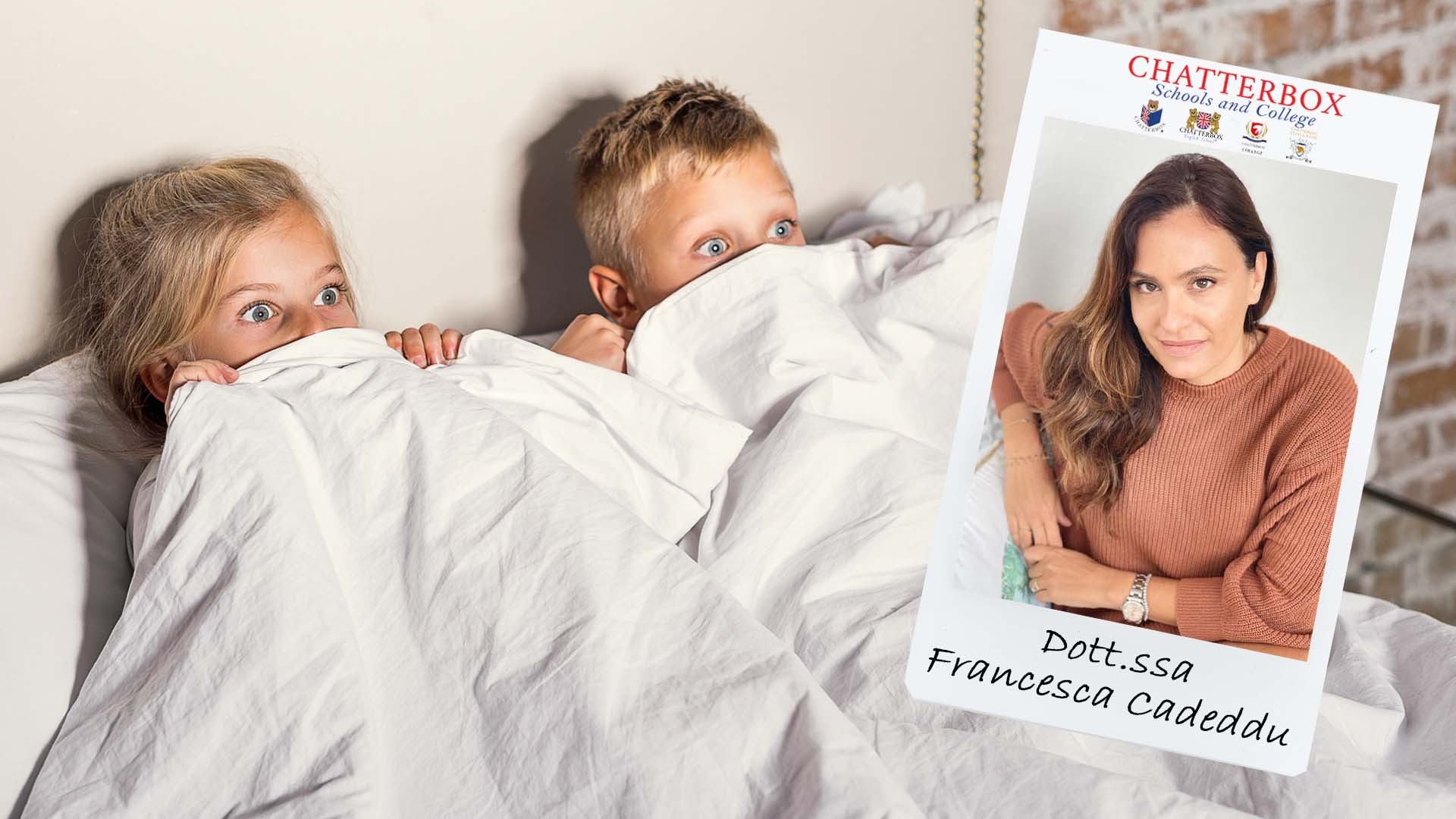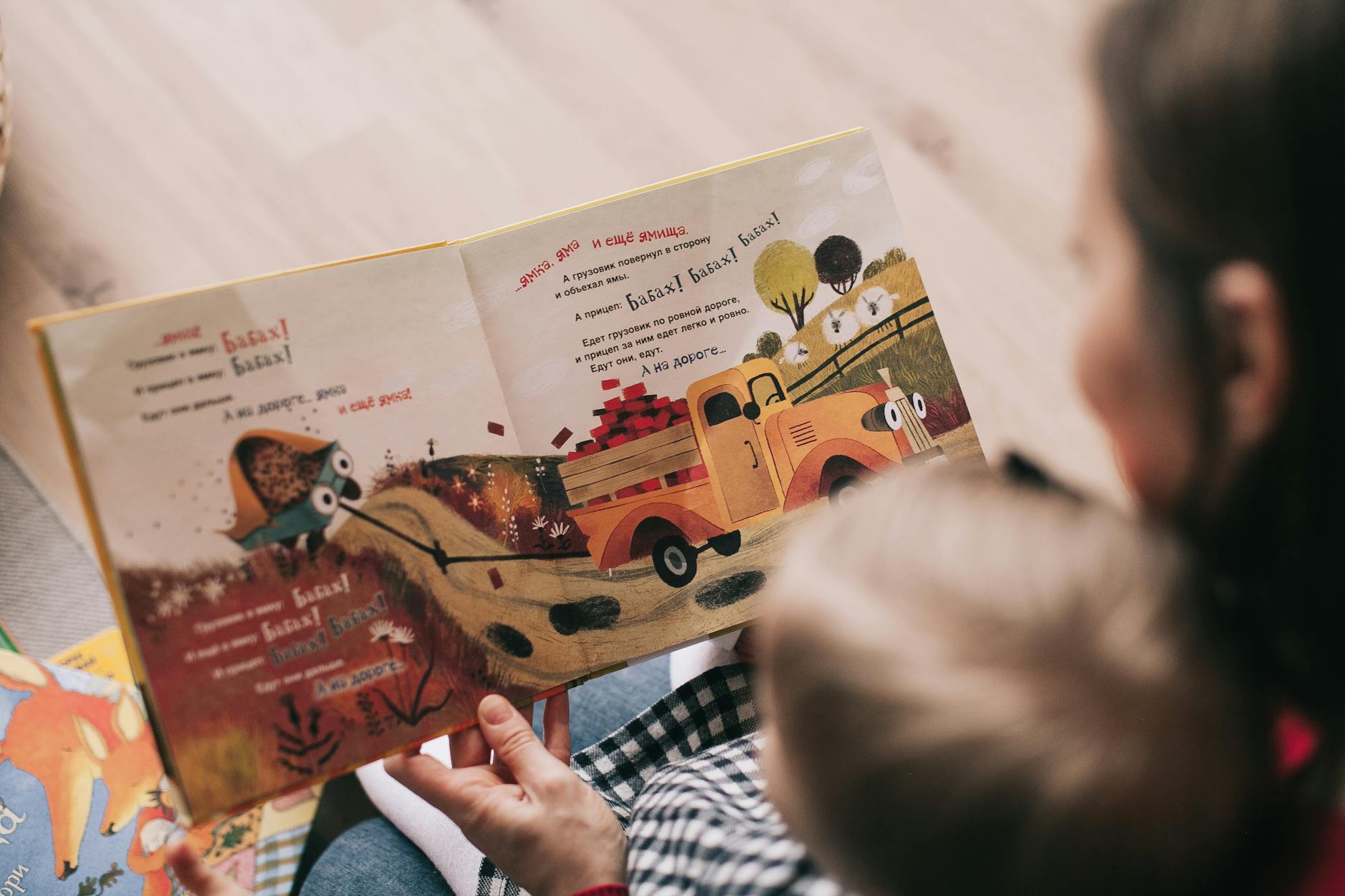Chatterbox Srl | Via Tempio 15 (front office via Tempio 27)
09127 - Cagliari (CA)
+39 070 773 8269
Mon - Thu 8am-5pm Fri 8am-3pm

📺Many families will gather in front of the TV tomorrow to enjoy a Halloween film together🎃🎞️, as tradition demands, but do you know what contents are suitable for your children?🤔
👩⚕️Psychotherapist Francesca Cadeddu, who is also one of our Chatterbox mums💖, says that following the recommendations given by the film companies regarding age limits may not be enough.💬
Read her article ⬇️

As for films, adhering to the recommendations given by the film companies themselves regarding age limits may not be enough, as even the cartoons found on the various platforms may present content unsuitable for children's development, for example because they are excessively violent and cynical. Some of them are in fact created for an adult audience.
The advice is therefore to always supervise, not to abandon the child to the vision of any content, because you are reassured by the “cartoon” format.
The presence of the parent is also essential to answer the child's questions and possibly support and reassure them in the face of themes or images that can upset them, especially if they are younger.

Likewise, it is wise to avoid leaving the child alone in front of the TV. Even in the case of the news, the presence of an adult who can explain, reassure, regarding the narration of news events that the child is not able to interpret, is necessary. In fact, some news and images can cause disturbance, and where there is a "hole" of meaning with respect to such events, the child tends to fill it with imagination, and sometimes the scenarios that are created may cause worry and concern.

With regard to fiction, however, I believe that classic fairy tales, which often contain also gory content inside, can be read (today also in adapted versions that are more understandable for younger children), right away. Fairy tales are born from the collective unconscious and are functional in processing the experiences and even the most uncomfortable emotions through the plot and the characters; it is a way of elaborating themes that are present in both the external and internal reality of the child and in his physiological fears; the good and the bad that the child also perceives within them, the obstacles and the possibility of facing them, and the ending in which everything is resolved, are, in some ways, the ingredients that help.
The story thus itself becomes a solution to the fears of children. Creating spaces to express fear allows the child to symbolize it by identifying with the protagonist of the story. Throwing himself completely into the adventure of the main character strengthens in the child the feeling of being able to face his own fears.

Another thing would be to expose children to the same contents through images: while the narration allows them to build images that are in any case sustainable, because they are created by their mental structure, exposure to the visual representation (for example, of the wolf devouring the grandmother or of the hunter who cuts open the belly of the wolf) would instead be potentially traumatic, because it is linked to different circuits, no longer to the imaginative ones.
In fact, a shocking image causes particular psychophysiological responses and the release of hormones that favor the "crystallization" within the neural networks, of those same images, and of the emotion associated with them, making it difficult to process.
In simple words, the brain is not able to process those images and the strong emotional response that derives from them activates the same mechanisms that the nervous system puts in place when you have to defend yourself from danger, putting the body in a state of tension that will prepare it for attack or escape. In the extreme, a dissociation of consciousness from the present moment may occur, in order to preserve the psychic integrity of the individual.

This process, which defends the system in an emergency phase, can produce the subsequent inaccessibility to the adaptive processes of the mind, compared to the shocking contents, to the possibility that they are elaborated, processed, therefore, so to speak, dissolved so that they are no longer disturbing.
Some studies related to the effects of violent images in children show that overexposure to shock images induces aggressive behavior towards others and towards oneself and that exposure to strong images produces a state of excitement of the nervous system that hardly subsides when you turn off the TV or video game. This charge, accumulated and not processed, can take on forms of self-directed aggression and in defensive response, leading to a desensitization of violence and of the suffering of others.
We also know that the child learns to deal with reality through the imitative process, and unlike the adult, he is unable to distinguish perfectly between reality and fiction.
Other studies have also highlighted that undergoing scenes of violence generates a climate of fear and terror and a pessimistic outlook. In fact, in my clinical practice it has not been uncommon to meet children with severe anxiety and panic attacks due to several hours of exposure to violent videogames.
The child expresses his discomfort in different ways from the adult, also because he often does not possess, or only partially possesses, the awareness of the reason for his discomfort. His fear can be silent and manifest itself indirectly, through a marked lack of curiosity and energy, difficulty in withdrawing from adults, and apathy. In other cases, the symptoms may be opposite: the child appears particularly irritable and complains of physical symptoms such as headaches, abdominal pains, suffers from dysfunction and regression with respect to sphincter control or nocturnal enuresis (bedwetting), especially in little ones. Unmanageable tantrums, aggression and oppositionality can also occur.

In these cases it is advisable to encourage the child's expression, showing understanding with respect to their emotional aspects. Often there is a tendency to minimize their fears, with a reparative intent; instead they need to experience understanding for what they feel and not be ashamed of it. Activating the narration of fear through verbalization or even helping them to express it through graphic representation, with the symbolic game they facilitate the processing and integration of the experience. In cases that persist over time, seek the help of a specialist.
To protect the child from exposure to content that could interfere with their growth path and with their emotional serenity, it is therefore essential to implement preventive actions according to what was said above and to sensitize all the figures who are with the child and who supervise them.

I also remind you that, in addition to classic TV and TV on demand, children often have mobile phones and other devices such as tablets and PCs at their disposal, which they can use independently.
In these platforms, not everything is under our control, because, in addition to the contents we specifically select on demand, there are contents in "push" mode, such as advertising and suggestions that may not be suitable for a child, or, if the device belongs to an adult, some contents may have been selected according to his/her taste and habits.

It is therefore essential to activate all the parental control systems at our disposal but, in any case, always apply supervision. Let us remember that what makes a negative experience more or less traumatic for the chldren is the possibility of being contained in that moment, through tuning in with an adult who would help to restore the balance of the nervous system and process what has been experienced.
I also suggest scheduling the time dedicated to watching videos at a specific time during the day, so that it does not become a refuge that the child can access at any time, in order to avoid the addiction that can easily be created.
Dott.ssa Francesca Cadeddu - Psicoterapeuta